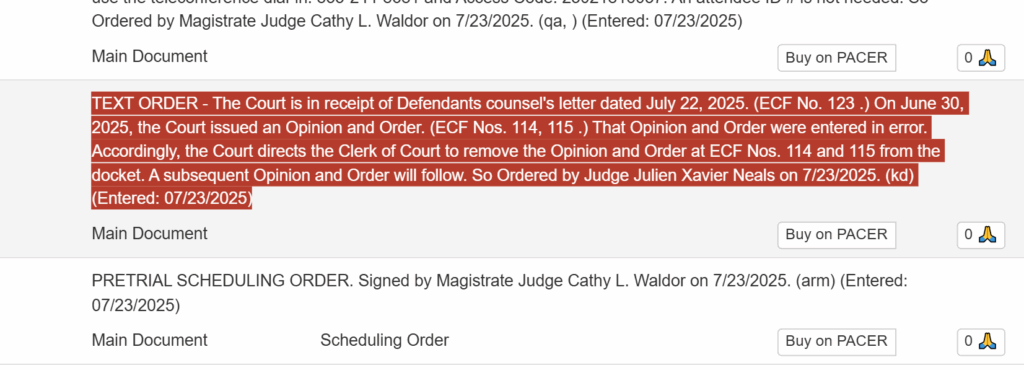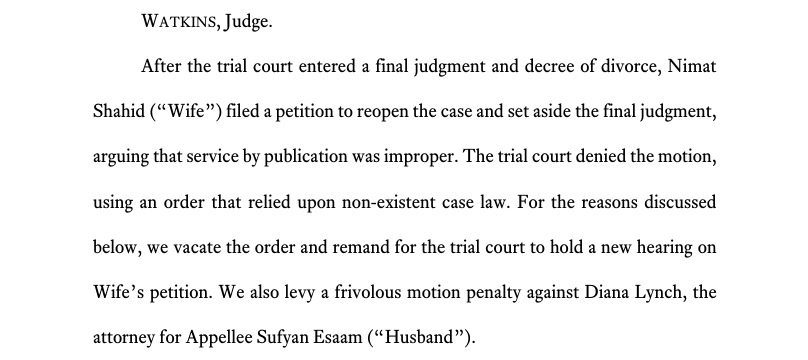
On July 23, 2025, U.S. District Court Judge Julien Xavier Neals for the District of New Jersey directed the Clerk of Court to remove previously published court opinion and order1 after attorneys for the defense identified “a series of errors in the Opinion—including three instances in which the outcomes of cases cited in the Opinion were misstated . . . and numerous instances in which quotes were mistakenly attributed to decisions that do not contain such quotes” were found in the court opinion.2 In the text order of the court, Judge Neals noted that the “Opinion and Order were entered in error” and “[a] subsequent Opinion and Order will follow.”3
The background of In re CorMedix Securities Litigation involves the plaintiff, Mr. John C. Levon, bringing a class action lawsuit on behalf of individuals who held shares of CorMedix between October 16, 2019, and August 8, 2022, against the company. CorMedix is a biopharmaceutical company that “focused on the development and commercialization of products for the prevention and treatment of infectious disease.”4
The case centers around the plaintiff’s claim that CorMedix (the defendant) allegedly “made materially false and misleading statements and omissions concerning the [c]ompany’s ability to secure FDA approval”5 for DefenCath, one of CorMedix’s lead product candidates requiring FDA approval. The main thrust of the plaintiff’s claims centers around the defendant’s alleged violations under the Securities Act of 1933 and the Securities Exchange Act of 1934.
As of this article’s initial publication (originally published on Wednesday, July 23, 2025), the court record does not indicate why the removed court opinion contained misquotes and misstatements. As such, there is no evidence to suggest that AI hallucination played a role in creating court opinion errors at this time.
Nevertheless, this incident reaffirms the crucial role of attorneys in protecting the integrity of judicial proceedings, especially at a time when deepfakes and AI-hallucinated information threatens to undermine judicial process.
If additional information becomes available, this article will be updated.
References:
- In re CorMedix Securities Litigation, No. 21-cv-14020 (D.N.J.), ECF No. 126, available via Court Listener <https://www.courtlistener.com/docket/60081508/in-re-cormedix-inc-securities-litigation/> ↩︎
- In re CorMedix Securities Litigation, No. 21-cv-14020 (D.N.J.), ECF No. 123 (See Letter), available here. ↩︎
- In re CorMedix Securities Litigation, No. 21-cv-14020 (D.N.J.), ECF No. 126 (“TEXT ORDER – The Court is in receipt of Defendants counsel’s letter dated July 22, 2025. (ECF No. 123 .) On June 30, 2025, the Court issued an Opinion and Order. (ECF Nos. 114, 115 .) That Opinion and Order were entered in error. Accordingly, the Court directs the Clerk of Court to remove the Opinion and Order at ECF Nos. 114 and 115 from the docket. A subsequent Opinion and Order will follow. So Ordered by Judge Julien Xavier Neals on 7/23/2025. (kd) (Entered: 07/23/2025)”) ↩︎
- In re CorMedix Securities Litigation, No. 21-cv-14020 (D.N.J.), ECF No. 114 (See Opinion) at 2, available here. ↩︎
- Id. ↩︎

